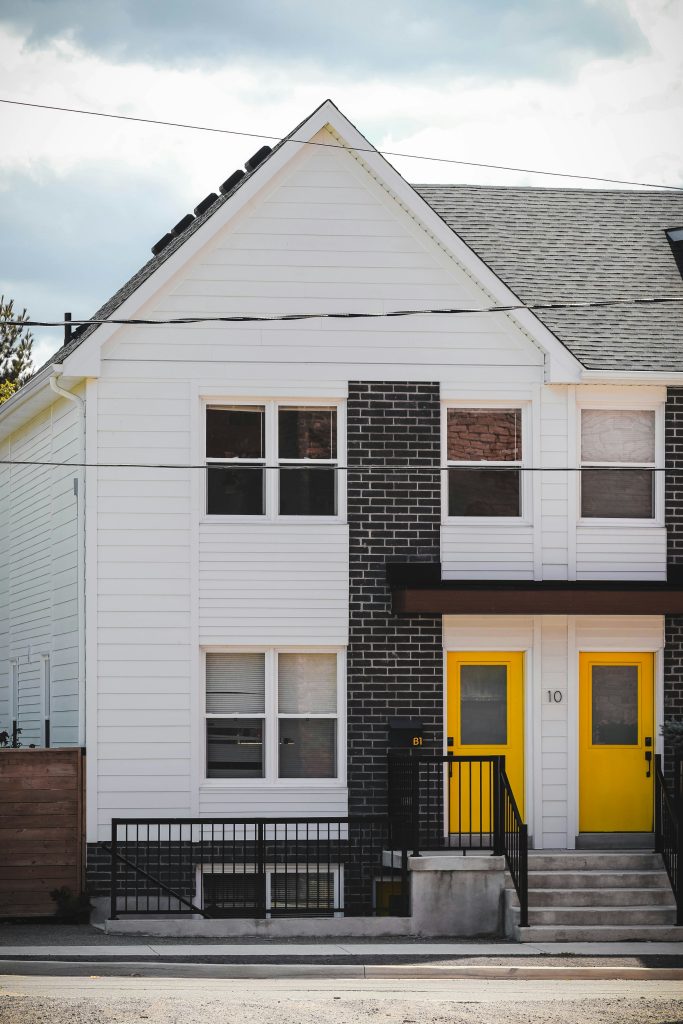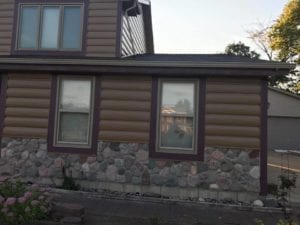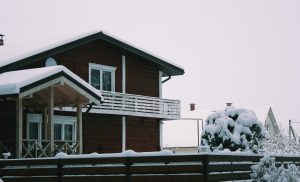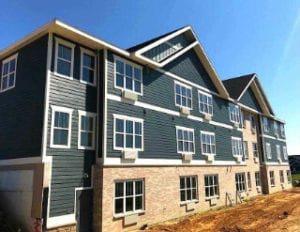When street traffic, barking dogs, or neighborhood construction cut into your peace and quiet, upgrading your windows starts to sound like more than just a cosmetic decision. For many Wisconsin homeowners, the question is clear: How do I block out the noise without overpaying for features I don’t need?
It’s not always obvious where the sound is leaking in, or which window types actually help. This article breaks down how noise reduction works, what to look for in quieter windows, and what to expect when replacing older units. We’ll explain key terms like STC rating, go over the pros and cons of double- and triple-pane glass, and help you decide when it’s worth calling a contractor.
We’ve handled window replacements on hundreds of homes across the Madison and Janesville areas, and noise is one of the most common homeowner complaints. Let’s walk through your options.
Reality check: Insulated windows don’t always mean quiet ones
We’ve replaced plenty of energy-efficient windows that still let in noise. The confusion usually comes down to thermal insulation vs. acoustic insulation. Just because a window is good at holding in heat doesn’t mean it’s good at blocking sound.
Reality check: Double-pane windows filled with argon gas might help lower energy bills, but they often fall short on soundproofing unless they’re built for it.
Sound travels through vibrations, not just air leaks. That means even well-sealed windows can carry noise through the glass itself, especially if both panes are the same thickness. The key to better sound reduction often lies in asymmetrical glazing or laminated glass.
Warning: Don’t rely on “double-pane” as a noise solution. Check for Sound Transmission Class (STC) ratings, not just energy specs.
What actually makes a window quiet?
Breaking down the STC rating
STC, or Sound Transmission Class, is the standard scale used to measure how much sound a window blocks. The higher the STC number, the better the sound control.
- STC 26–28: Typical single-pane or standard double-pane windows
- STC 30–33: Upgraded double-pane windows with air gaps
- STC 35–38: Windows with laminated glass or varying pane thickness
- STC 40+: Specialized acoustic windows (used in hospitals, airports)
In most residential cases, an STC rating of 32–35 offers a noticeable improvement without jumping into commercial-grade pricing.
Note: Each additional 10 STC points roughly cuts perceived sound in half. But beyond STC 38, returns get more expensive without major noise change.
Glass options that help with noise
- Laminated glass: Two panes bonded with a plastic layer. Reduces both high and low frequency noise (like lawn mowers or bass).
- Asymmetrical panes: Different thicknesses (e.g., 3 mm outer + 5 mm inner) reduce vibration at multiple frequencies.
- Larger air gaps: Wider spaces between panes absorb more vibration but may reduce thermal performance slightly.
Pro tip: If you’re near highways or train tracks, laminated glass is often the most cost-effective sound upgrade.
Window frames, seals, and installation quality
Why material and sealing matter
Even the best glass won’t help much if the frame leaks or flexes under pressure. We’ve seen noise come in through small gaps around vinyl frames or through worn weatherstripping.
- Vinyl: Can be cost-effective but may expand or contract with temperature changes, affecting seals.
- Fiberglass: More rigid and stable, better at maintaining a tight seal.
- Wood: Offers natural insulation, but gaps can form as the material ages.
- Composite: Combines materials to control movement and temperature sensitivity.
Reality check: Sound often leaks at corners and installation seams, not just through the glass. DIY window swaps without proper insulation can amplify the problem.
Costs, timelines, and what to expect in 2024–2025
Typical pricing for sound-reducing windows in Wisconsin
Here’s a general range based on current projects:
- Standard double-pane vinyl: $600–$850 per window (STC 28–30)
- Upgraded STC 32–35 with laminated or asymmetrical glass: $950–$1,400 per window
- High-performance STC 38+ acoustic windows: $1,500–$2,200 per window
Note: Prices vary by frame type and home layout. Large bay or casement windows increase material and labor time.
Pro tip: Window replacement usually takes 1–3 days depending on quantity and weather. If you’re installing during winter, snow or freezing temps may extend sealing and curing time.
Wisconsin climate and noise-blocking performance
Seasonal behavior of noise-reducing windows
During colder months, sound behaves differently. Snow and ice can muffle outside noise, while tightly closed windows trap interior echoes. In summer, when windows are open or only partially sealed, even the best STC-rated unit won’t help much.
Warning: Don’t judge a window’s acoustic performance based on a quiet winter day. Summer lawnmowers, parties, and road noise will return.
Note: If you use window AC units, noise gaps often come from those appliances, not the window itself. Built-in systems or mini-splits reduce that problem.
When to replace vs. retrofit your windows
Fixes that work (and ones that don’t)
Some homeowners ask about window inserts, acrylic panels or magnetic seals placed inside the frame. While these can help in older homes, they’re not a long-term fix.
- Inserts may improve STC ratings by 4–8 points, but they also trap moisture or complicate ventilation.
- New windows with laminated glass and proper installation usually outperform any retrofit over time.
Reality check: If your windows are older than 15–20 years and already show drafts or condensation, full replacement delivers better results for both sound and energy use.
What we’ve learned from real installations
We’ve replaced windows in homes right next to I-39, rail lines, and airports. In nearly every case, laminated glass paired with a well-insulated fiberglass or composite frame delivered the best result.
From our recent installs in Sun Prairie and Oregon, we’ve seen homeowners report up to 60% drop in street noise, especially in bedrooms and offices.
“The old windows weren’t even broken, they just let in every truck that passed,” says Jim, a Heins Contracting customer in Verona. “After the switch, you could actually hear yourself think.”
FAQ: Understanding noise-blocking window choices
How do I know which STC rating I need?
Think about your current noise level and tolerance. If occasional cars or barking are the issue, STC 32–34 usually helps. If you’re near a main road, aim for 35+. Talk to a contractor about which windows match your wall insulation and home layout.
Are triple-pane windows always quieter?
Not necessarily. Triple-pane helps with thermal performance, but unless the panes vary in thickness or include lamination, the acoustic benefit is limited. Focus on STC rating, not pane count alone.
Can I just add storm windows or inserts?
You can, but expect mixed results. Interior panels may reduce some high-frequency sounds but won’t handle low-end traffic rumble. Moisture control becomes an issue, especially in winter.
Do noise-reducing windows help with insulation too?
Yes, but it depends on the configuration. Laminated glass and well-sealed frames also improve thermal resistance. You’ll usually gain some R-value and save modestly on heating bills as a bonus.
Quiet starts with the right materials and right install
Noise issues often creep up gradually, a busier road, a new neighbor with a backyard speaker, or construction down the block. Whatever the cause, waiting too long to act means more daily irritation and lost sleep.
If you’re serious about cutting noise and maintaining insulation, our team at Heins Contracting can help you evaluate which window types make sense for your space and budget. We’ve installed hundreds of units across south-central Wisconsin, from city homes to rural retreats.
Noise won’t stop on its own. But the right window setup can make it fade into the background, quietly and effectively.




